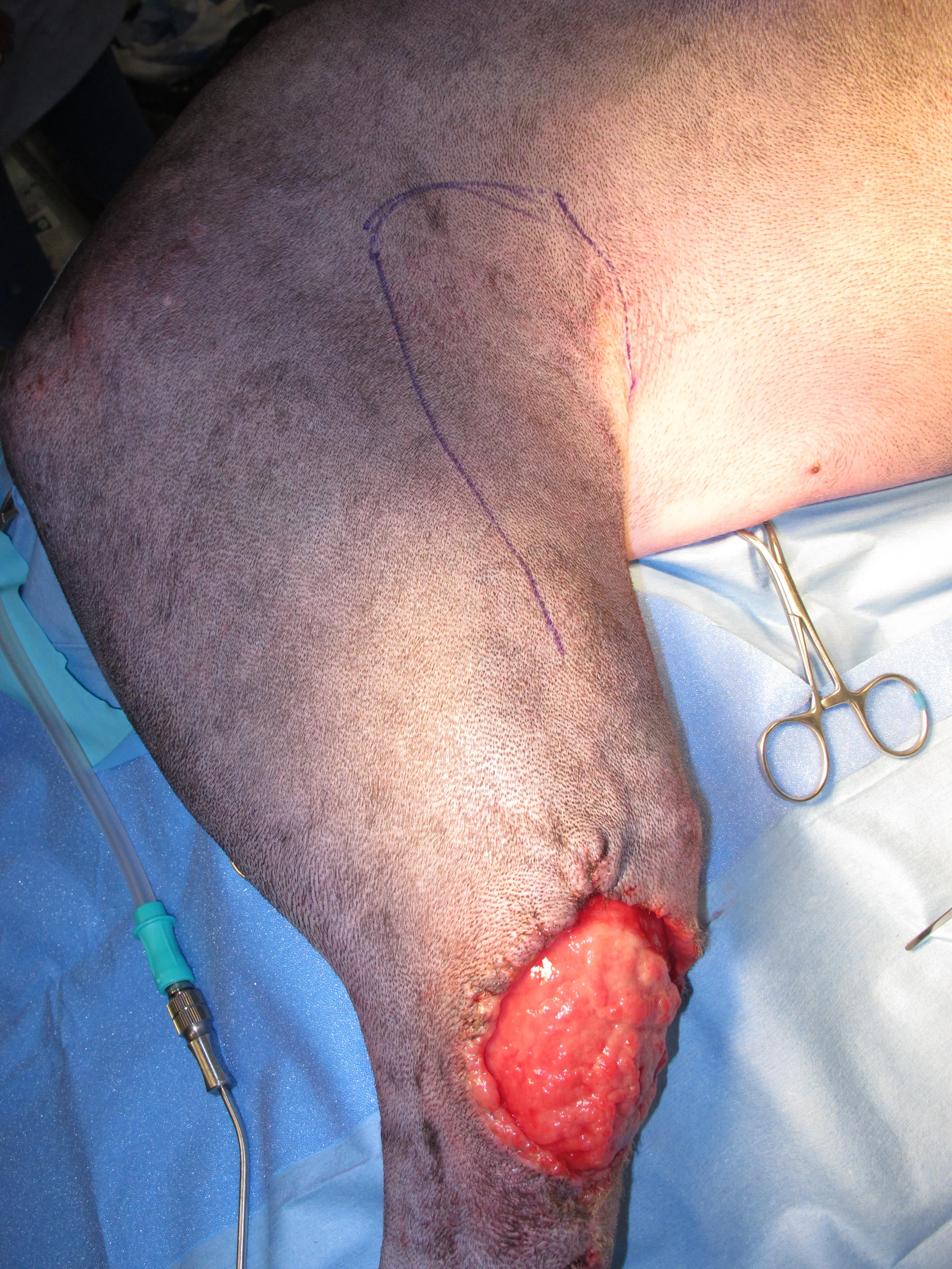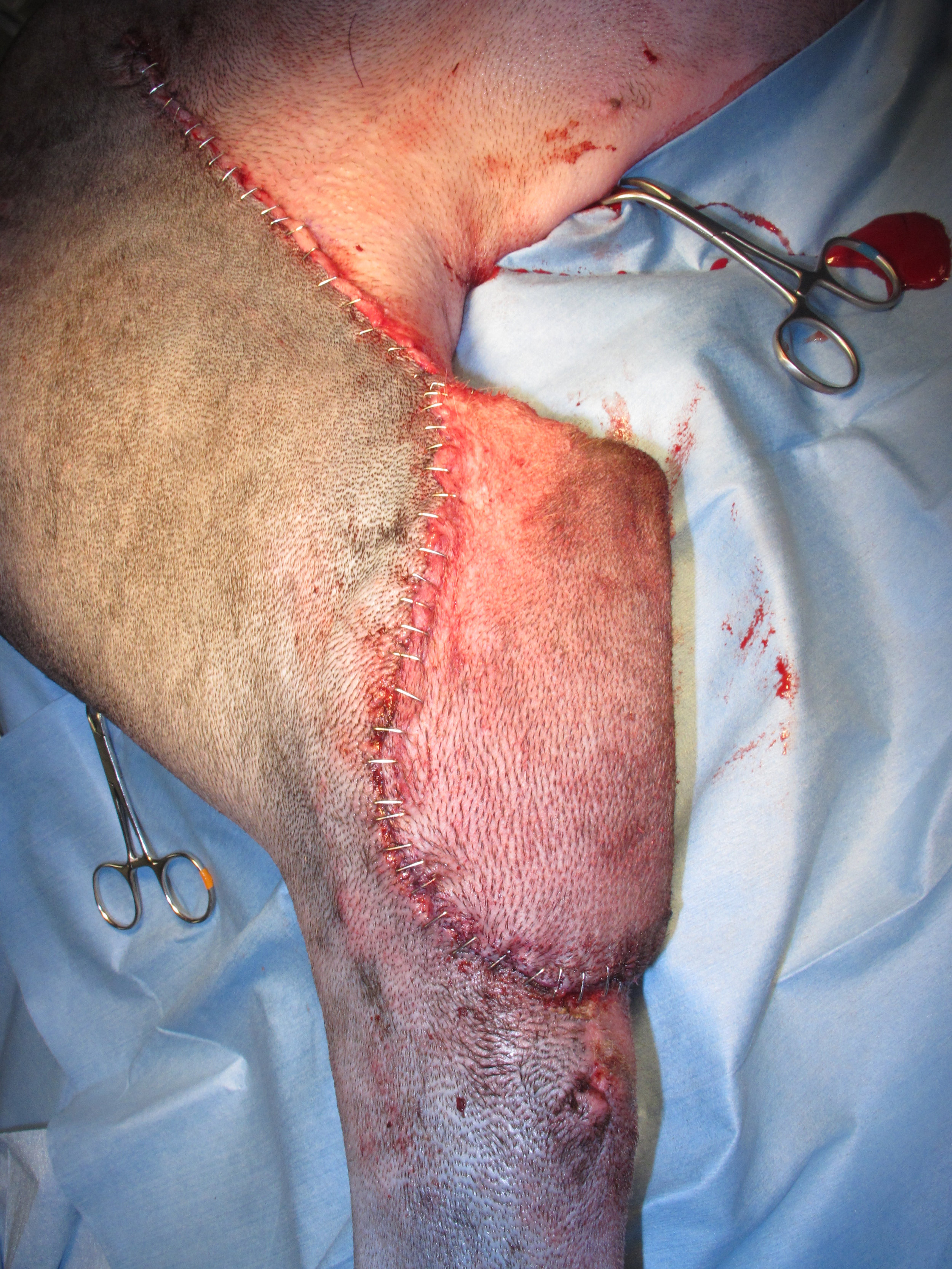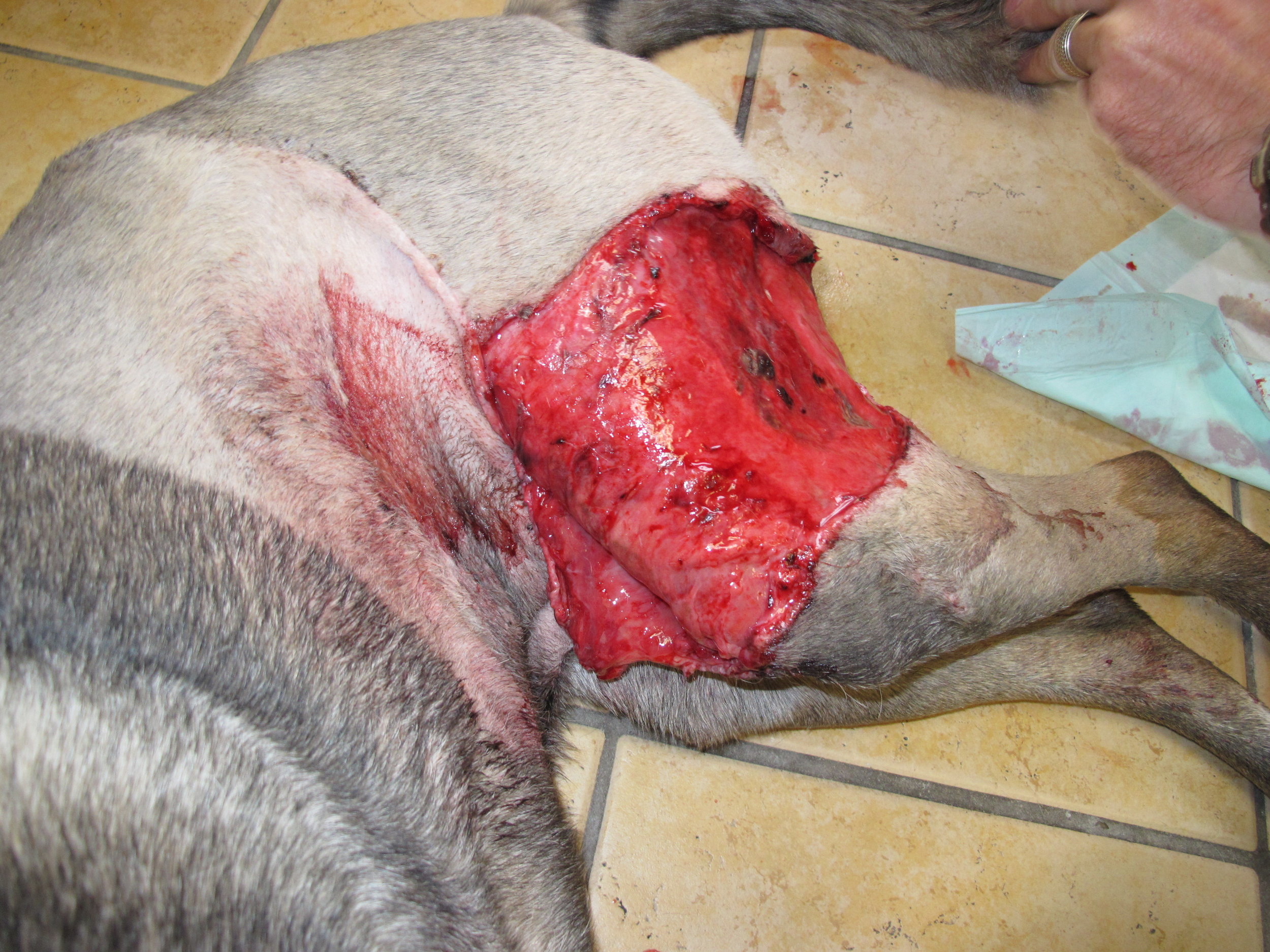INGUINAL FLANK FOLD FLAP
The inguinal flank fold flap is considered a type of subdermal plexus flap (similar to a transposition flap), although there is some debate as to whether these are actually axial pattern flaps. Survival of subdermal plexus flaps depends on the deep or subdermal plexus entering the base of the flap, which in turn are supplied by the terminal branches of the direct cutaneous vessels. The inguinal flank fold flap involves U-shaped incisions over the inguinal flank fold on the cranial aspect of the thigh. The base of an inguinal flank fold flap can be located distally (for reconstruction of distal pelvic limb wounds) or proximally (for reconstruction of ventral abdominal or lateral thigh wounds).
Case 1 - Tarsal Soft Tissue Sarcoma






Case 2 - Mammary Carcinoma with Bilateral Inguinal Flank Fold Flaps






Case 3 - Tail Base Soft Tissue Sarcoma (in Combination with a Lateral Caudal Axial Pattern Flap)






Case 4 - Lateral Thigh Soft Tissue Sarcoma






Case 5 - Hip Soft Tissue Sarcoma
Case 6 - Dehiscence of Stifle Mast Cell Tumor Resection






Complications



Last updated on 6th March 2017








